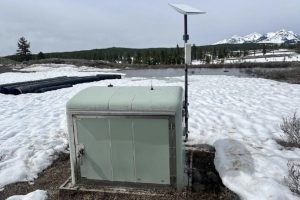- 🚗 Tesla recalls 1.8 million vehicles due to an unlatched hood detection fault.
- 🔁 The issue is addressed through an over-the-air (OTA) software update.
- 📄 Affected models include 2013-2024 Model S, 2016-2024 Model X, 2017-2024 Model 3, and 2020-2024 Model Y.
- 🚔 Only 1% of the recalled vehicles are estimated to have the defect.
- 🔧 Fault may cause the hood to open while driving, increasing collision risk.
- ⚠️ In China, the issue was primarily due to latch switch deformations.
- 🌍 Higher occurrence rates were noted in China compared to North America and Europe.
- 📅 Tesla began its investigation in March 2024, with a recall decision made by July 2024.
- 🛠 Three warranty claims related to the issue were identified in the US.
- 💻 Software fix (firmware release 2024.20.3) detects open hood and notifies drivers.
- 🚀 Vehicles produced from July 15, 2024, include the fix in their software.
In an unprecedented move, Tesla has announced a recall affecting a staggering 1.8 million vehicles owing to a fault in the hood latch detection system. This blog post dives deep into the details of this recall, the affected vehicle models, and how Tesla plans to rectify the issue using the power of technology.
Tesla, the name synonymous with electric vehicle innovation, recently initiated a significant recall impacting 1.8 million of its vehicles manufactured between 2013 to 2024. The fault lies in the hood latch detection system, which might fail to notify drivers of an unlatched hood, posing safety hazards. This blog post will explore the scope of this recall, the technical issues at its core, and Tesla’s tech-driven solution to address the problem.
A Closer Look at the Recall
This recall has garnered considerable attention, and for a good reason. The National Highway Traffic Safety Administration (NHTSA) notes that the recall affects Tesla Model S (2013-2024), Model X (2016-2024), Model 3 (2017-2024), and Model Y (2020-2024) models. Although 1.8 million vehicles are under scrutiny, only about 1% are believed to possess the defect.
Why Was This Recall Necessary?
The primary concern is the hood latch mechanism, which may not detect an open condition. This failure could result in the hood unlatching while the vehicle is in motion, potentially obstructing the driver’s view and significantly raising the risk of accidents.
Geographic Disparities in Fault Detection
Tesla’s investigation highlighted an interesting trend: higher rates of hood latch issues in vehicles produced in China compared to those in North America and Europe. This discrepancy was primarily due to latch switch deformations observed in the affected Chinese vehicles.
Timeline: From Detection to Resolution
- March 2024: Tesla begins investigating after customer complaints about unintended hood openings in China.
- Mid-April 2024: The fault’s root cause is identified, mainly affecting vehicles in China.
- June 7, 2024: Detailed analysis of field samples continues to understand fault commonalities.
- July 17, 2024: Decision to recall is made by Tesla.
- July 20, 2024: Tesla identifies three warranty claims related to the issue in the US.
Tesla’s High-Tech Solution: OTA Software Update
True to its innovative DNA, Tesla chose an over-the-air (OTA) software update to address the hood latch fault. This update, starting from firmware release 2024.20.3 on June 18, 2024, aims to enhance the system’s ability to detect an open hood and promptly notify the driver.
Firmware 2024.20.3 and Beyond
Affected Tesla drivers received the OTA update at no cost, ensuring their vehicles could now detect and alert them to an open hood state. Moreover, all Tesla models produced post-July 15, 2024, come equipped with the fixed software already integrated.
The Safety Recall Report
For those wanting to delve deeper into the official documentation, the NHTSA’s Safety Recall Report provides a comprehensive breakdown of the issue, the investigation timeline, and the implemented solution.
Implications and Opinions
While recalls can often tarnish a brand’s reputation, Tesla’s proactive approach highlights its commitment to customer safety and technological advancement. The use of an OTA update not only ensures swift resolution but also minimizes inconvenience for Tesla owners.
Insights and Recommendations
- Proactive Monitoring: Tesla’s early detection and swift response underline the importance of robust monitoring systems for all automakers.
- OTA Updates: This recall exemplifies the benefits of over-the-air updates, potentially setting a precedent for future recalls in the industry.
- Geographic Considerations: Automakers should closely monitor regional variations in vehicle performance to prevent such issues.
Conclusion
Tesla’s recall of 1.8 million vehicles may be one of the largest in its history, but the company’s reliance on OTA software updates to address the issue demonstrates its dedication to both safety and innovation. As the electric vehicle landscape continues to evolve, Tesla’s approach to problem-solving could well become the industry norm.





